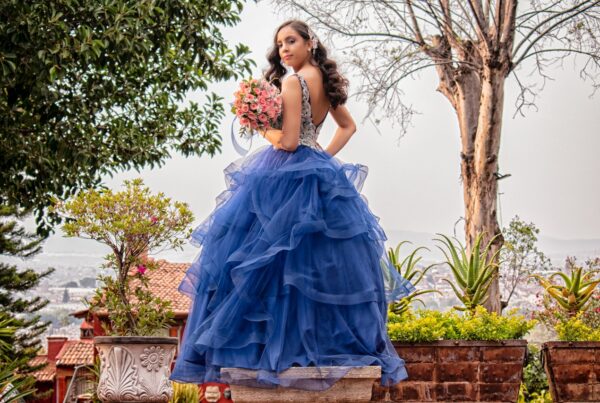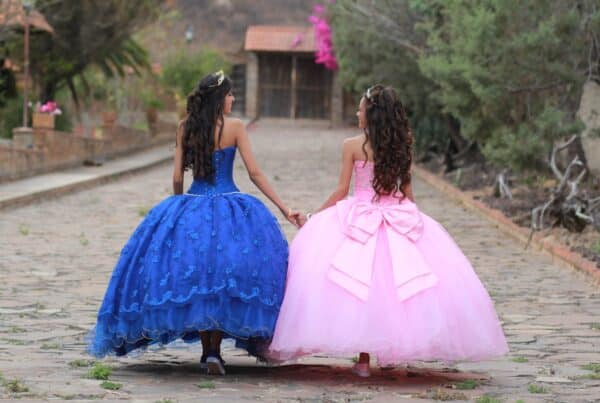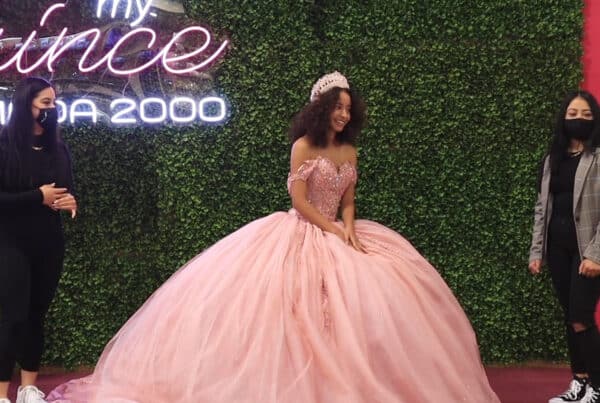The Quinceañera, a vibrant and joyous celebration, plays a significant role in Latin culture. The celebration is a beautiful blend of old Mesoamerican customs and Spanish colonialism. It honors a young girl’s coming-of-age on her 15th birthday, marking the transition from childhood to womanhood. It is a day of celebration and solemn ritual, of family and community, of tradition and individuality.
History and Evolution of Quinceañera
Quinceañera traditions originate from ancient Mesoamerican cultures, where rites of passage were important in marking major transitions in a person’s life. The Spanish colonists later incorporated Catholic elements into these celebrations, transforming them into the fusion of traditions we recognize today. Britannica says the tradition may have originated from the melding of Spanish culture (including Roman Catholicism) with the indigenous cultures they colonized, such as the Aztecs and Maya.
Despite sharing common roots, the Quinceañera is not celebrated uniformly across all Latin cultures. Each country and community adds its unique touch to the celebration, reflecting regional customs and personal family traditions.
The Spiritual Ceremony
The Quinceañera celebration often starts with a special Mass, where the Quinceañera, dressed in a formal gown, arrives with her parents and godparents. This event allows the Quinceañera to reaffirm her dedication to God and receive blessings for the path ahead.
She receives symbolic gifts during the Mass—like a cross or a Bible—representing her commitment to her faith and her role as a young woman in the community.
The Court of Honor
Accompanying the Quinceañera is the Court of Honor, typically consisting of her closest friends, cousins, and siblings. The Court of Honor includes the ‘Damas’ (girls) and ‘Chambelanes’ (boys), each playing a significant role in the ceremony and often participating in the waltz.
The number of court members can vary but traditionally, 14 “Damas” and 14 “Chambelanes” are selected, each representing a year of the Quinceañera’s life.
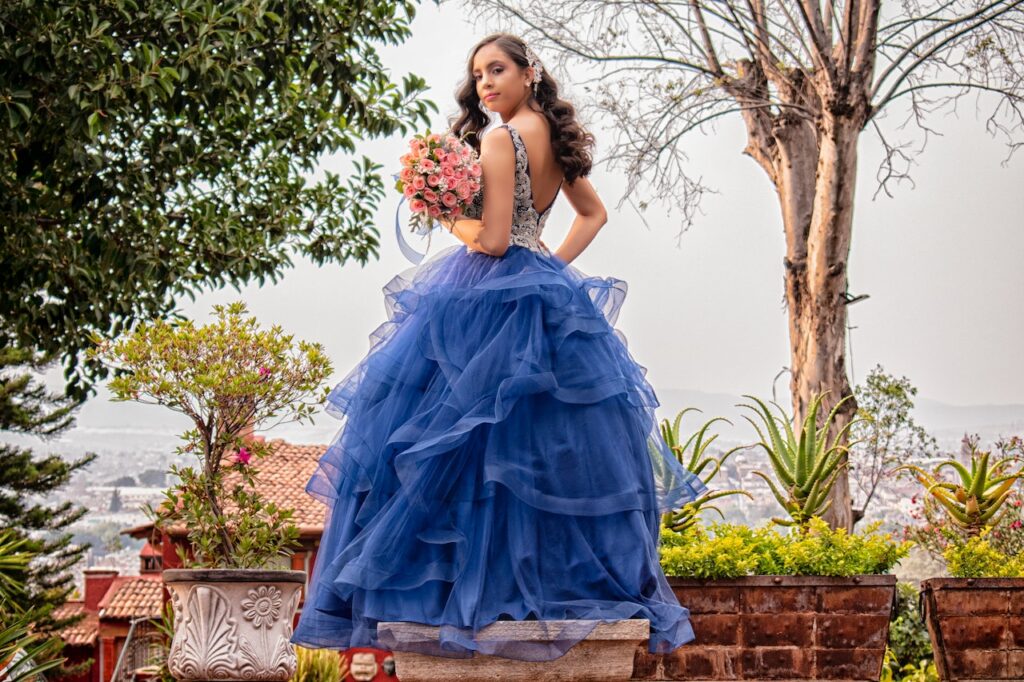
The Quinceañera Dress
One of the most iconic elements of a Quinceañera is the dress. Symbolizing purity, the dress is traditionally white, much like a wedding dress. Still, modern Quinceañeras often choose other colors to reflect their individual style. Here’s a handy guide on what to wear to a Quinceañera.
Nowadays, many families blend traditional styles with modern ones, reflecting the evolving nature of the Quinceañera tradition and the growing influence of individual personality and cultural fusion.
The Changing of the Shoes
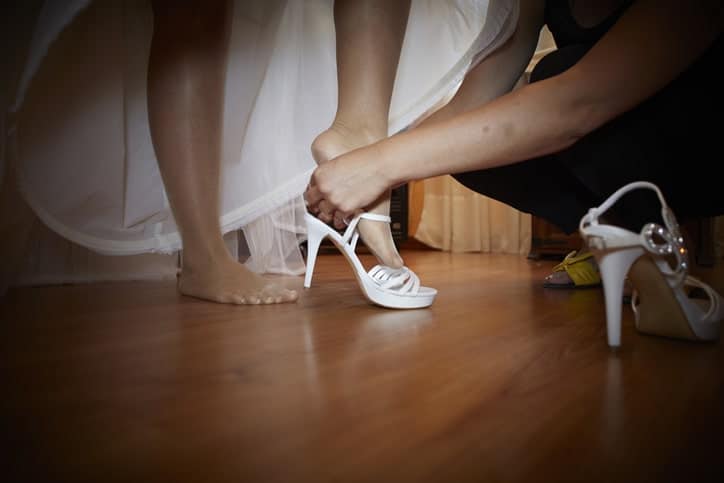
The “changing of the shoes” is a symbolic tradition where the Quinceañera’s father or another significant male figure changes her shoes from flats to high heels. This act is a poignant symbol of the young girl’s transition into womanhood.
The Quinceañera Waltz
The waltz, or “baile sorpresa”, is one of the most anticipated parts of the celebration. The Quinceañera and her Court of Honor perform a choreographed dance that usually takes months of practice. This performance is entertaining for the guests and signifies the grace and elegance of the young woman coming of age.
Gifts and Their Symbolism
During the celebration, the Quinceañera receives symbolic gifts, such as a tiara, which signifies her triumph over childhood and the arrival of womanhood. Other traditional gifts include a cross or medal, a scepter, a Bible or prayer book, and the “last doll, ” each with a significant meaning.
The Reception and Celebration
The reception is a joyous celebration of food, music, and dance. It’s a chance for friends and family to come together and honor the Quinceañera. The event is often hosted at a beautiful venue like the elegant Regency Event Venue, which provides a fairytale-like backdrop to this magical day.
Modern Quinceañeras often incorporate creative themes, photo shoots, and a variety of entertainment to add to the traditional elements, making the event a unique blend of the old and the new.
Quinceañera in the Modern World
Like any tradition, the Quinceañera is not immune to the influences of changing societal norms and globalization. According to Wikipedia, in the 21st century, many girls create their own quinceañera celebrations, straying from the historically rigid customs. For instance, whereas traditional dresses were formal and usually white or pink only, dress designs have now become more varied.
Also, instead of having the traditional seven damas and seven chambelanes, the quinceañera may pick all damas or all chambelanes, reflecting their personal preferences. Other changes include the dance customs shift and the shoes’ ceremonial changing. Planning a modern Quinceañera may seem daunting but with a comprehensive Quinceañera planning checklist, it becomes more manageable.
While the essence of the celebration remains, families today often adapt aspects of the ceremony to fit their modern contexts. Some argue for the importance of maintaining tradition, while others see the beauty in evolution and adaptation, creating a dynamic dialogue within communities.
And while maintaining traditions, many families are now considering how to plan the perfect Quinceañera on a budget, a reflection of the evolving socio-economic conditions. For those wondering about costs, this article provides an estimate of how much a Quinceañera might cost.
Conclusion
The Quinceañera is an enduring symbol of the vibrant Latin culture. It beautifully blends historical tradition and contemporary trends, and captures a unique moment in a young woman’s life. As we honor the past and embrace the future, the Quinceañera stands as a testament to the ongoing journey of cultural heritage, the timeless ritual of coming of age, and the radiance of the young women it celebrates.


